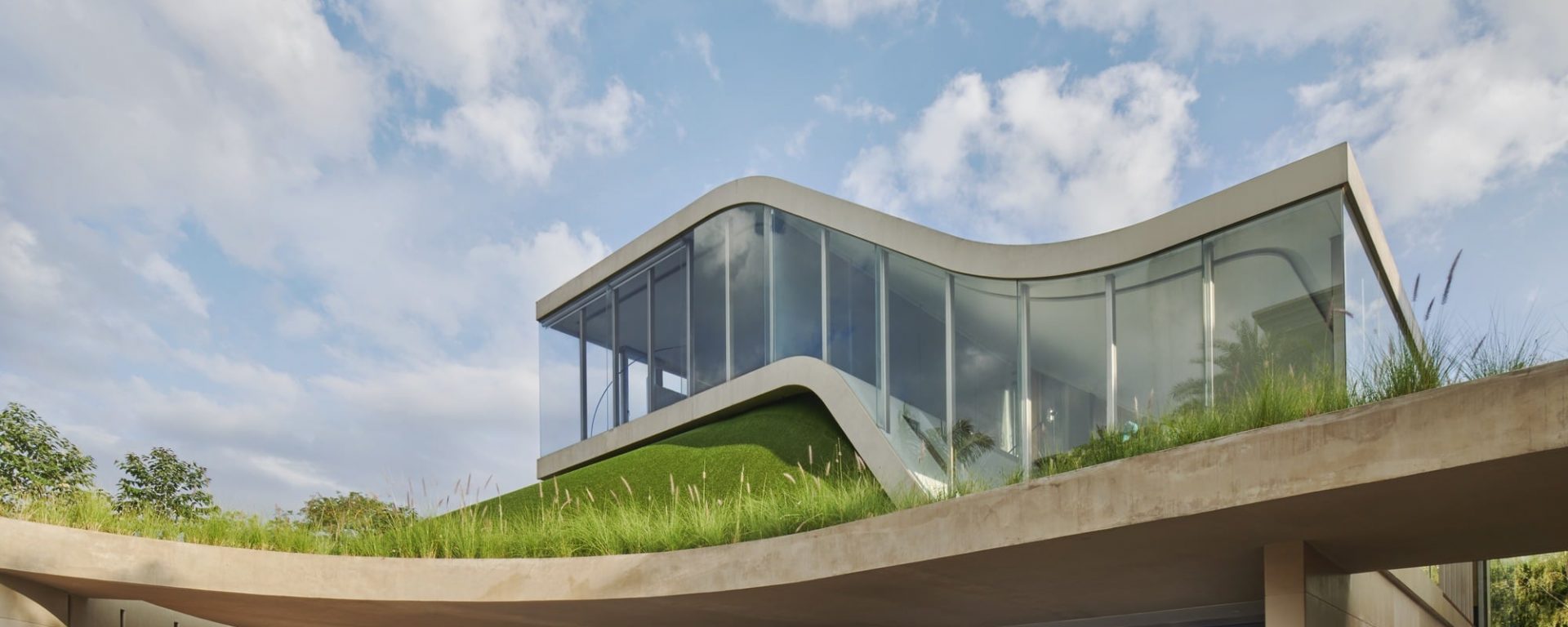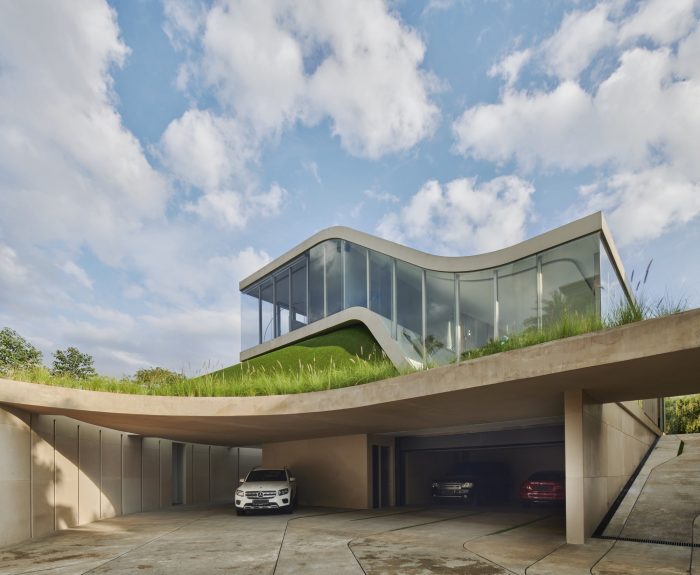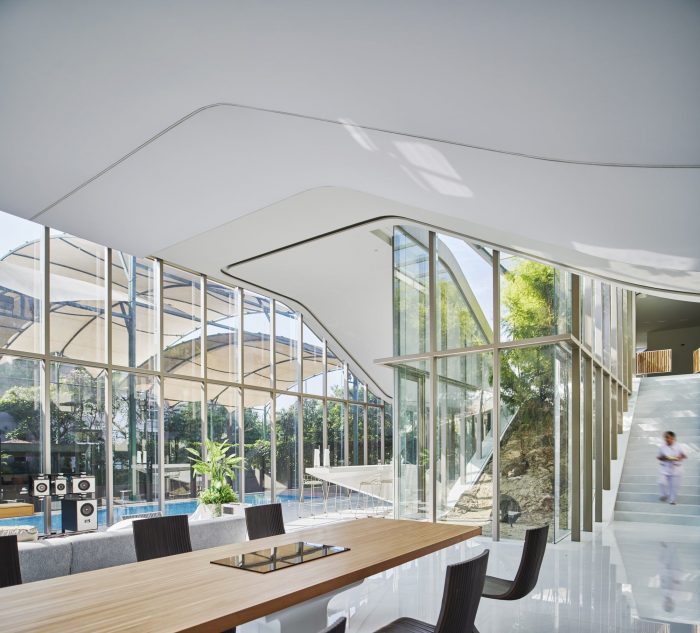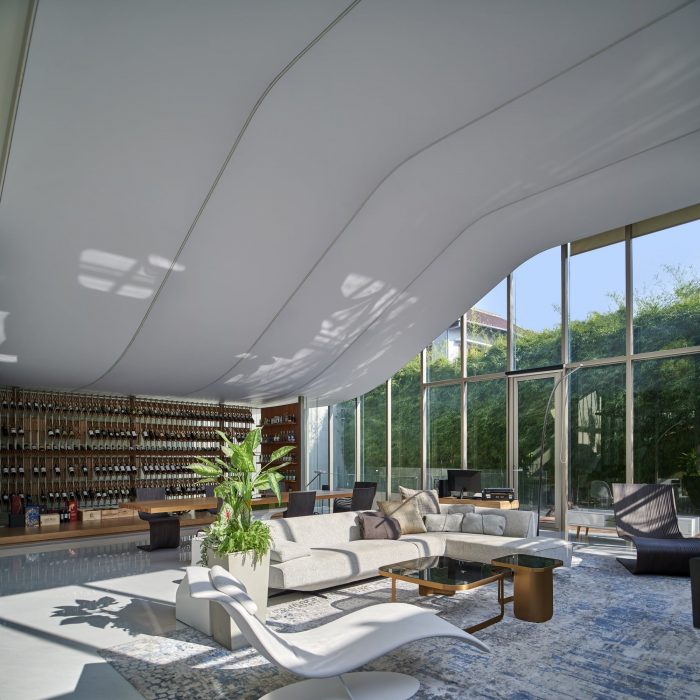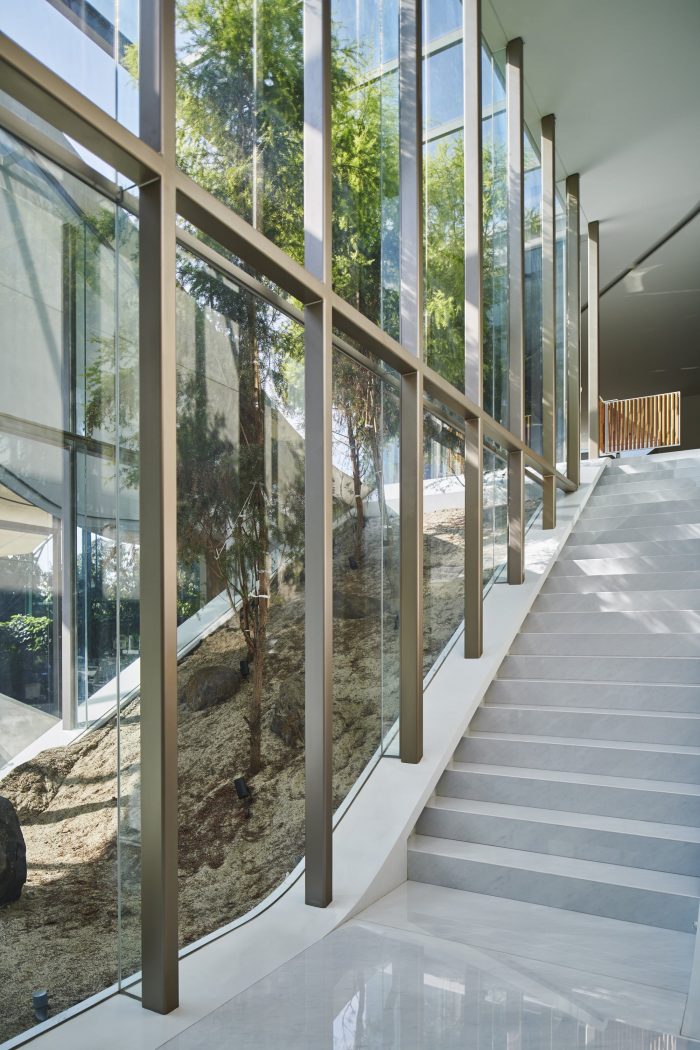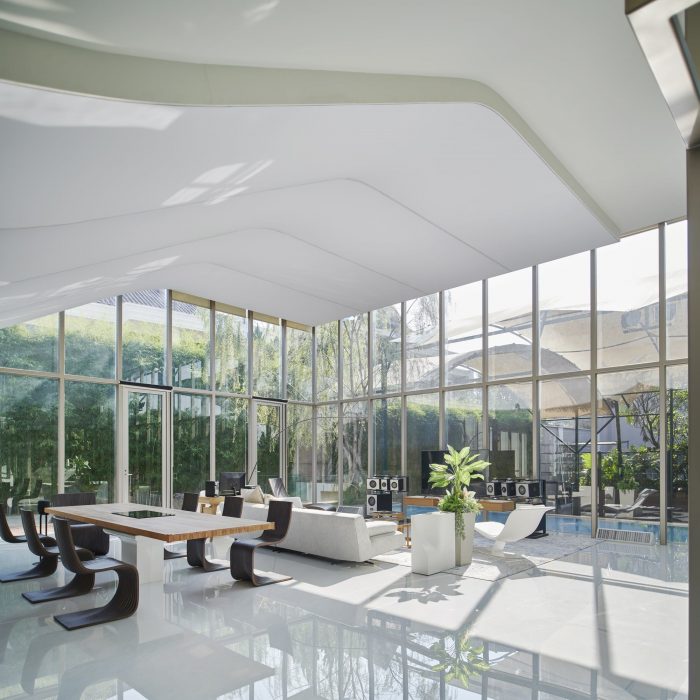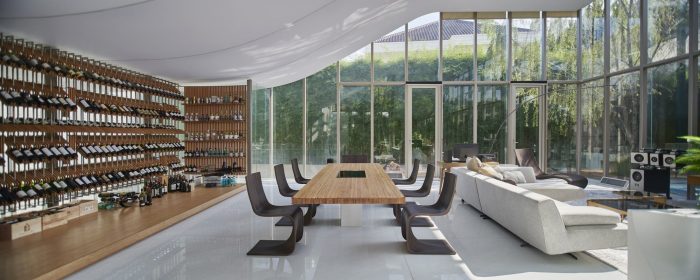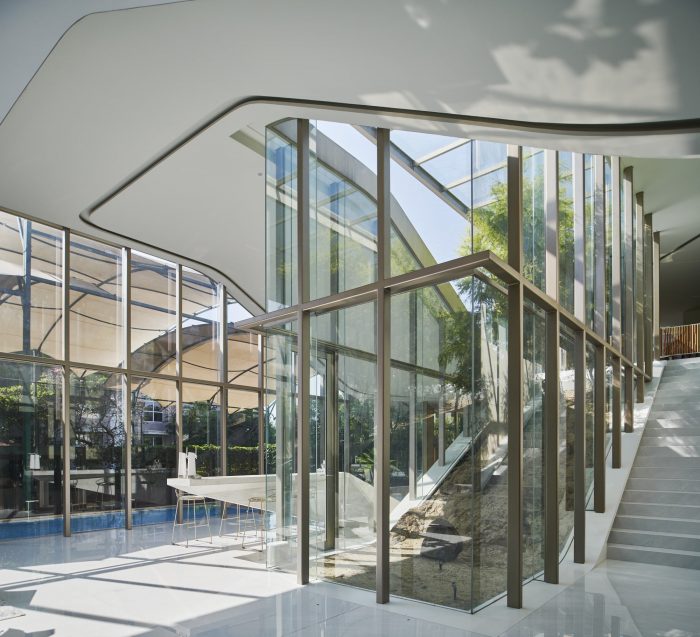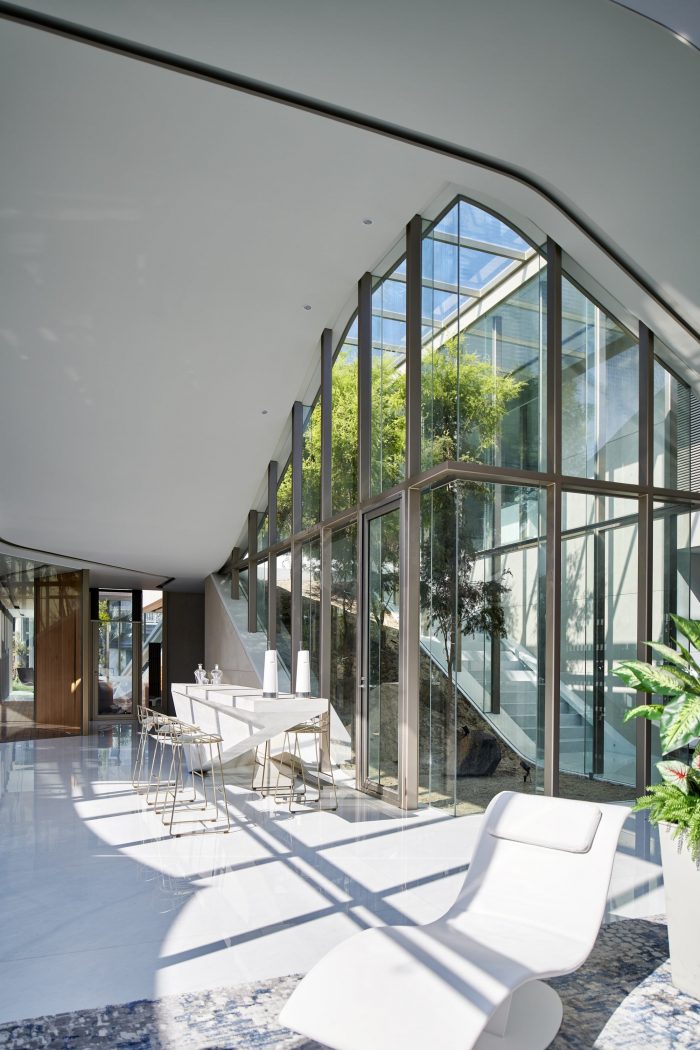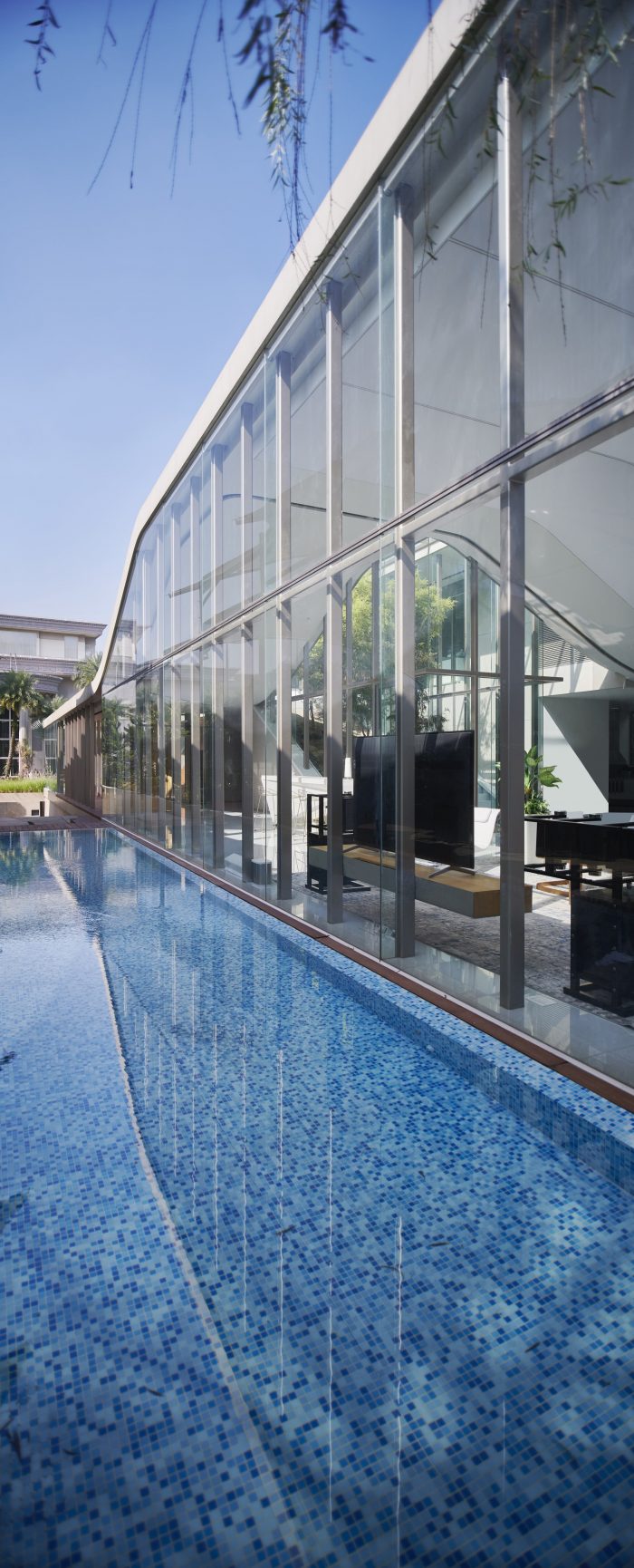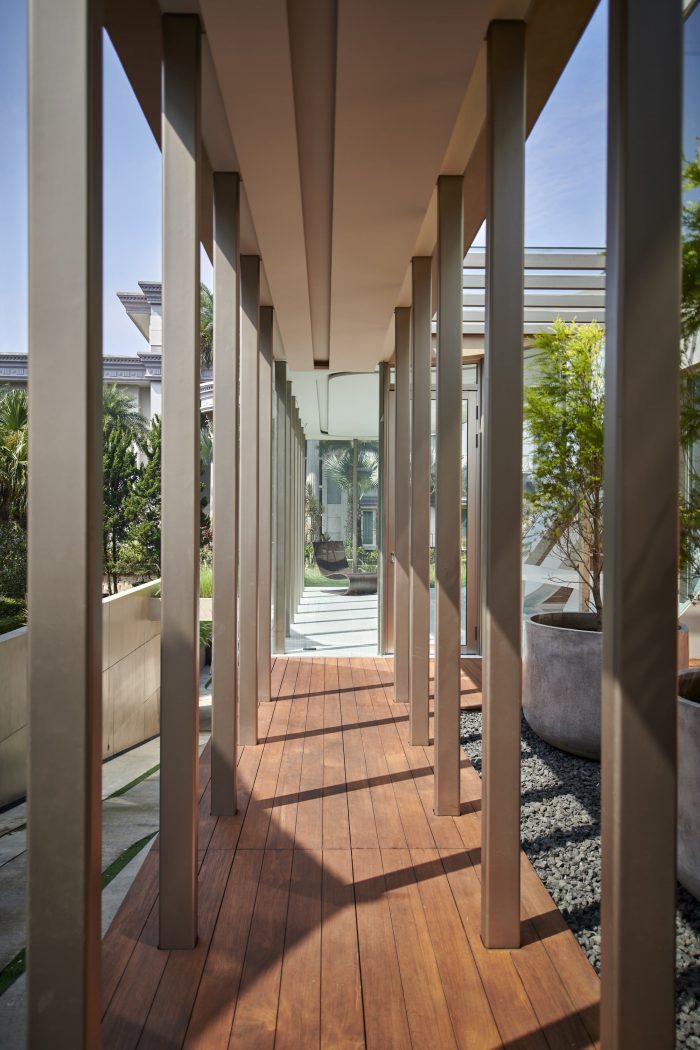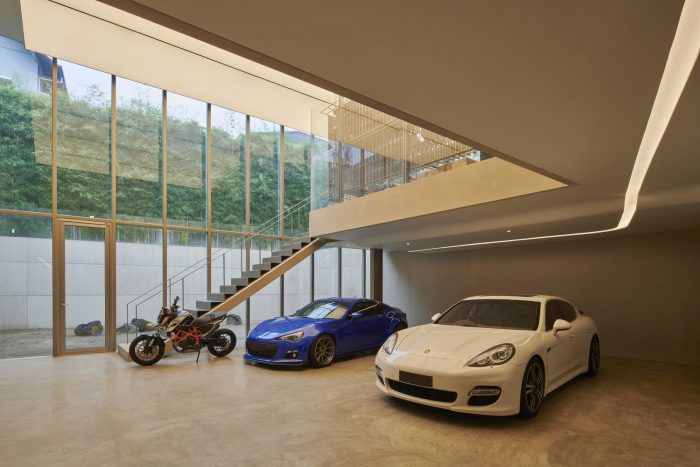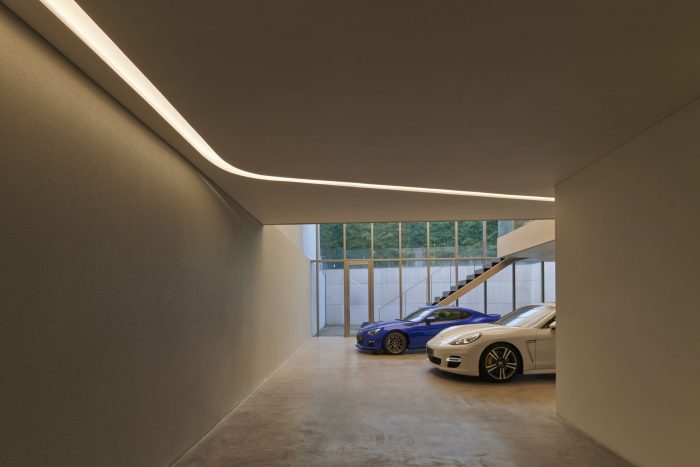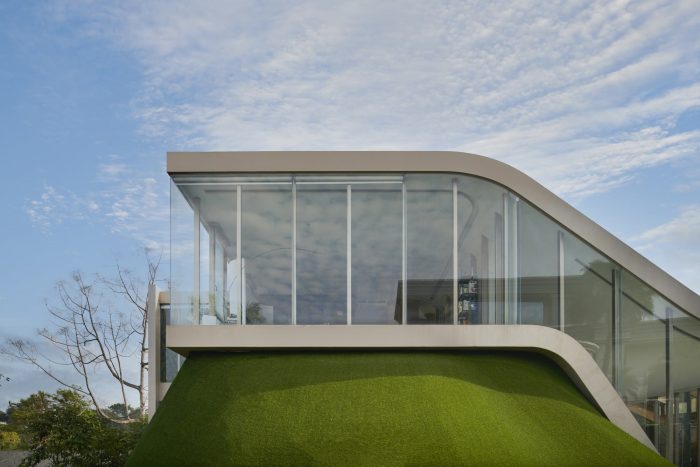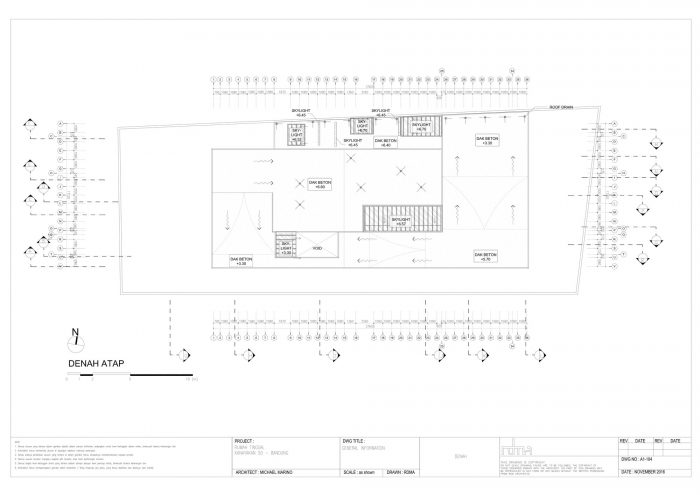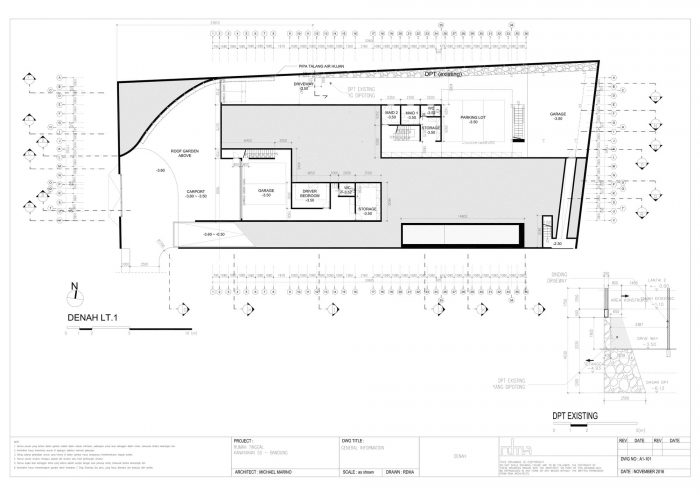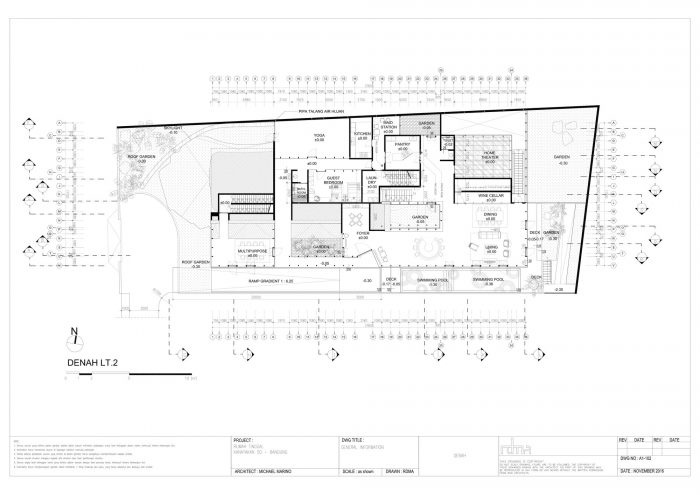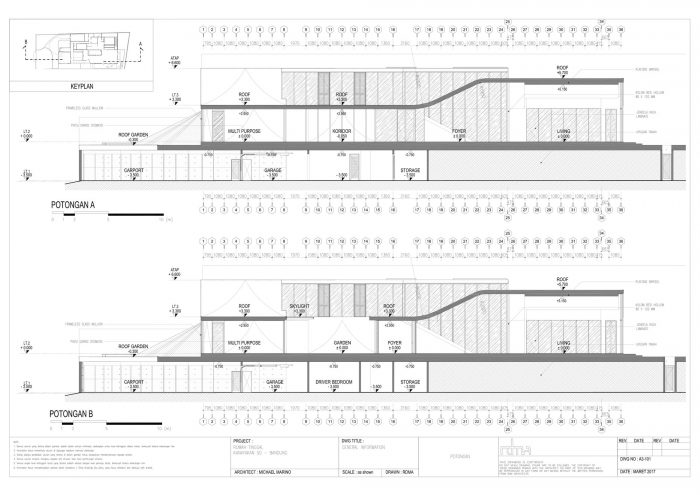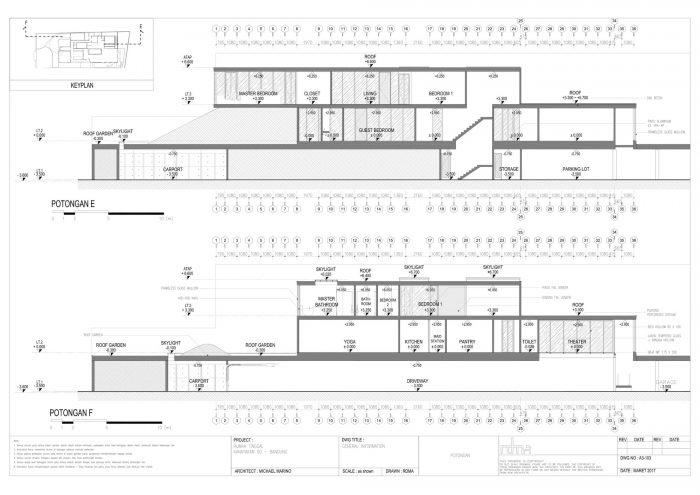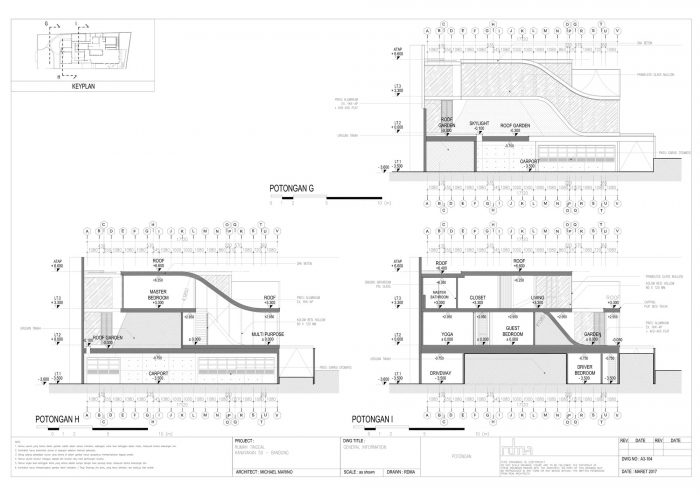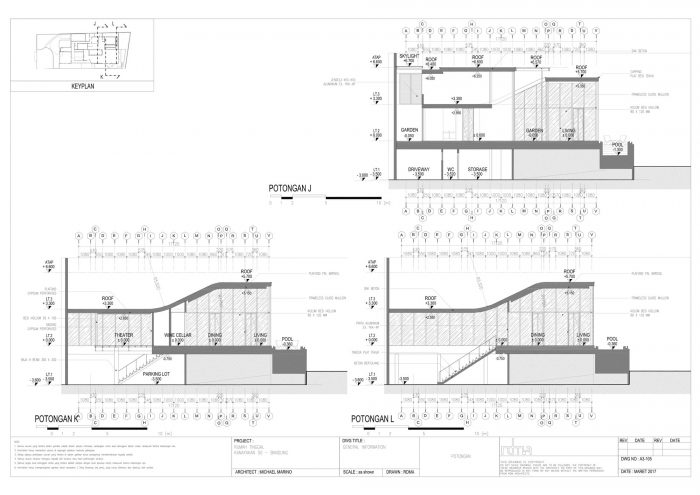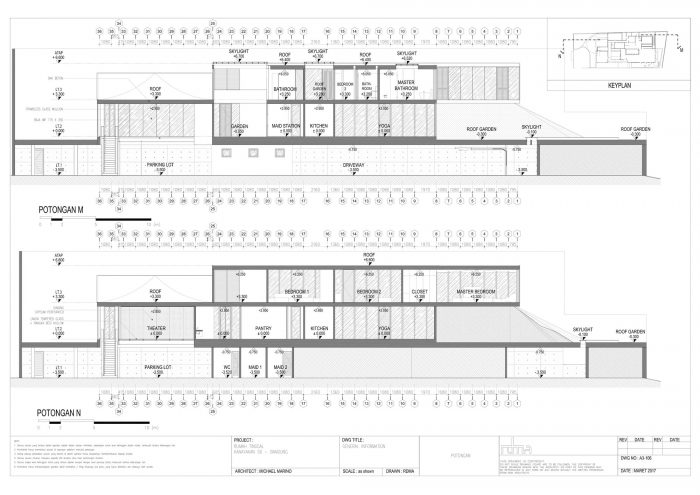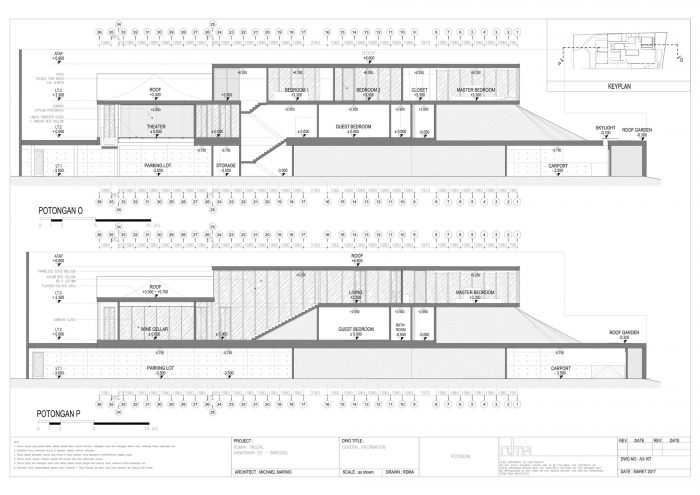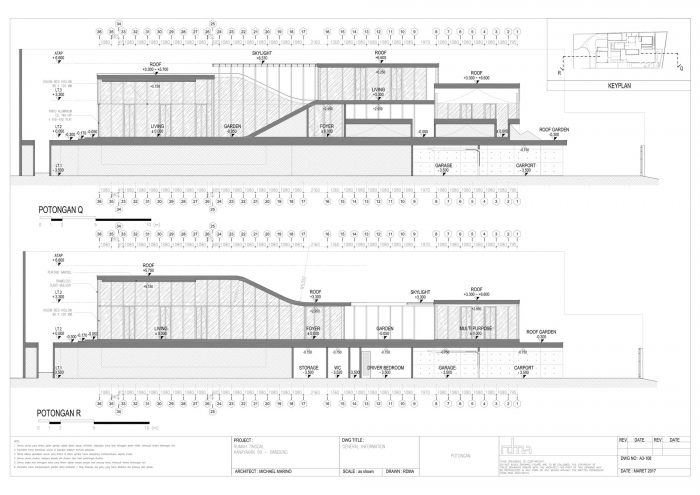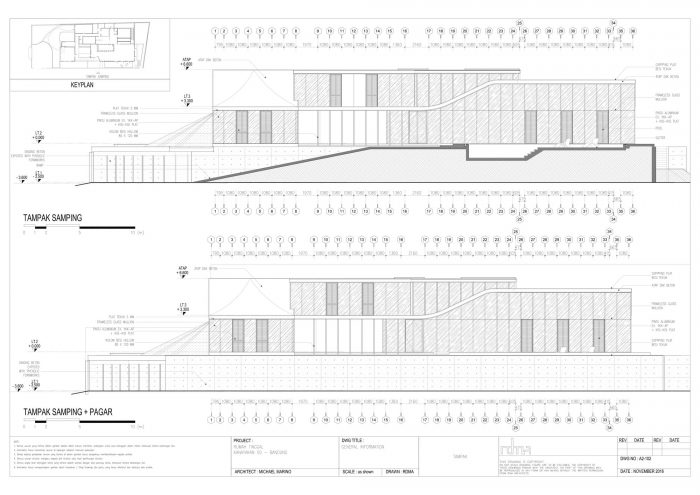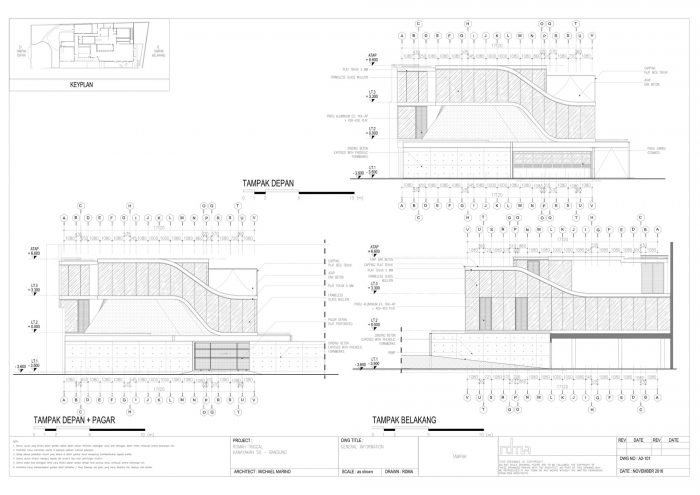这座位于印度尼西亚万隆市的三层楼、三间卧室的房子,其未来主义的设计从屋顶花园中凸显出来,是一个与众不同的项目。客户希望在忠实于中国古代传统风水实践的同时,建造一个独一无二的、时尚的、现代的房子。由于古代的智慧,在设计过程开始之前,场地被分为九个相等的部分,代表八个红点及其中心。
With a futuristic design jutting out of a rooftop garden, this three-story, three-bedroom house in Bandung City, Indonesia is a project like no other. The client wished for a one-of-a-kind, sleek, and modern-looking house while being faithful to the ancient Chinese traditional geomancy practice of Feng Shui. Due to ancient wisdom, before the design process began, the site was divided into nine equal sections, representing the eight cardinal points and their center.
经过对场地的仔细观察,后来确定,根据风水系统,九个部分中的四个部分比其他部分更吉利,因此适合作为居住空间。为了进一步增加吉利性,这四个部分的房子需要被抬高。这也是房屋设计和布局的基础。卧室和家人会花很多时间的空间都放在这四个吉祥的部分。然后用楼梯、走廊和坡道将这些部分与房子的其他部分连接起来。
After careful observation of the site, it was later determined that based on the Feng Shui system, four of the nine sections were more auspicious than others and therefore suitable as living spaces. To increase the auspiciousness even further, these four sections of the house needed to be raised. This serves as the basis for the design and layout of the house. The bedrooms and spaces in which the family would spend much of their time are placed in these four auspicious sections. These sections are then connected to the rest of the house using stairs, hallways, and ramps.
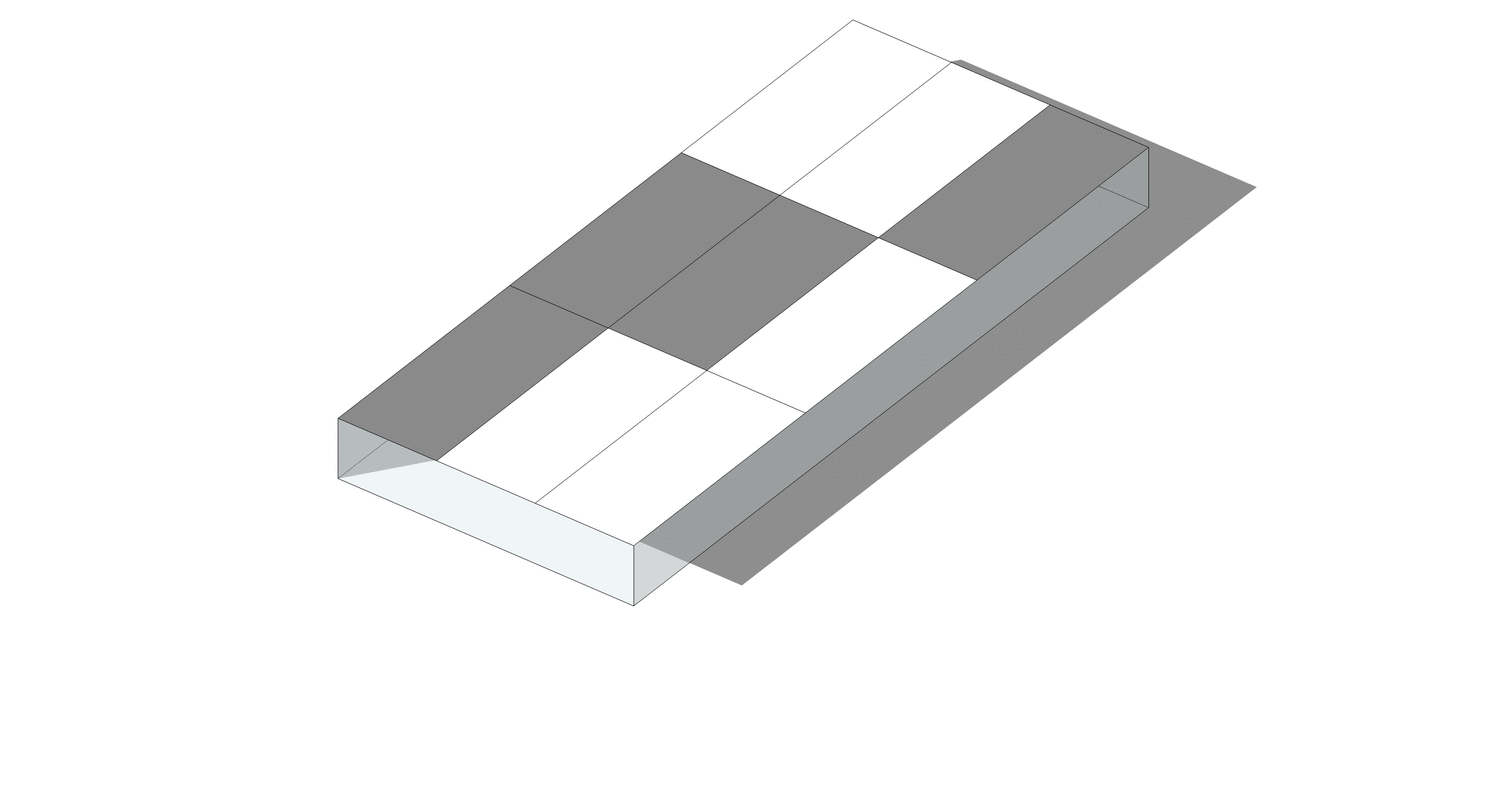
然而,风水系统还规定,这四个吉利区与地表相连,这就是为什么在该房产中增加了覆盖着草的土堆,这些土堆延伸到主卧室下面两层,尽管它们对结构的完整性没有任何影响。同样作为风水原则的结果,缓缓弯曲的倾斜屋顶的产生是为了强调四个部分的层次感,使建筑具有独特的外观,并突出了四个主要区域之间的高低变化。
However, the Feng Shui system also dictates that the four auspicious sections are connected to the surface of the earth, which is why grass-covered earth mounds which extend two floors below the main bedroom were added to the property, even though they added nothing to the integrity of the structure. Also as the result of the Feng Shui principle, the gently curved sloping roofs are generated to emphasize the hierarchy of the four sections, giving the building its unique look and accentuating the play of elevation between the four main areas.
为了打开内部空间,建筑的外墙采用了钢柱,消除了室内承重结构的需要。未来主义的主题延伸到内部,从使用灯带和半透明的天花板来照亮某些房间,定制的悬臂形厨房岛和浴室盥洗台的存在,到空调系统在地板下而不是天花板上运行的方式以及其他迷人的细节。
To open up the interior, steel columns are used on the building’s outer walls, eliminating the need for load-bearing structures indoors. The futuristic theme extends inside, from the use of light strips and translucent ceilings to illuminate certain rooms, the presence of custom-made, cantilever-shaped kitchen islands and bathroom vanities to the way the air conditioning system is run underneath the floors instead of the ceiling and other captivating details.
Architects: RDMA
Year : 2019
Photographs :Nilai Asia
Manufacturers : Neolith, Conture Concrete Lab., Desiree, Kaii Living, Mapei, PIEGATTO
Lead Architects : Michael, Adikritz
City : Bandung
Country : Indonesia

